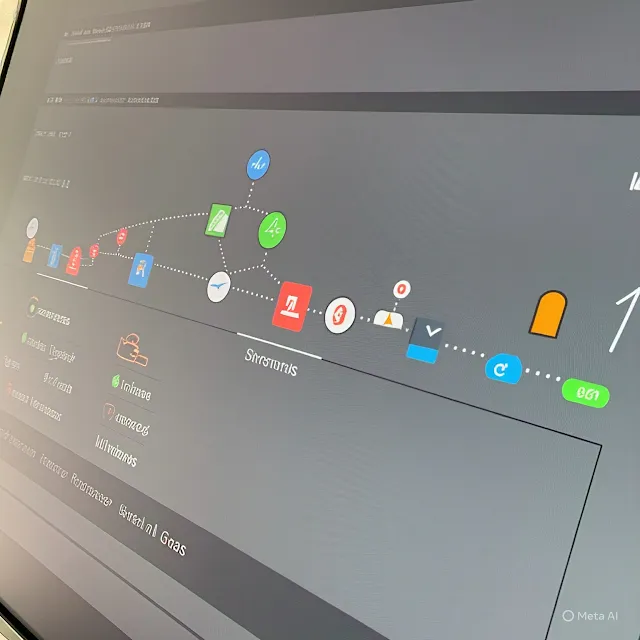Digital Transformation Assessment: A Strategic Gateway to Smarter Innovation.
Table of Contents:-
1. The Role of Assessments in Digital Planning.
2. What is a Digital Transformation Assessment?
3. Key Benefits of Digital Assessment in 2025.
4. Why Measuring Digital Maturity Matters.
5. Top Providers of DX Assessment Services.
6. How to Conduct a Successful Assessment.
7. Creating a Clear Digital Transformation Roadmap.
8. Improving Transformation with Agile Principles.
9. Why Every Strategy Needs an Assessment.
10. Frequently Asked Questions (FAQs).
11-Conclusion.
1. The Role of Assessments in Digital Planning:-
A Digital Transformation Assessment isn’t just a diagnostic — it’s the strategic foundation for organizations wanting to compete, adapt, and thrive in today’s tech-driven world. It provides clarity on where your organization stands and how to move forward.
2. What is a Digital Transformation Assessment?
A Digital Transformation Assessment is a structured evaluation that:-
Measures your organization’s current digital maturity.
Assesses how well your systems, people, and processes align with digital goals.
Identifies gaps, risks, and opportunities in technology adoption.
This process is vital before investing in major digital solutions or implementing new systems.
3. Key Benefits of Digital Assessment in 2025:-
Defines a clear digital vision.
Aligns IT and business strategies.
Reveals bottlenecks in operations.
Enables better resource allocation.
Builds leadership alignment and support
Without a solid assessment, digital efforts often fail due to misalignment and poor planning.
4. Why Measuring Digital Maturity Matters:-
Understanding your digital maturity level means knowing:-
Where you are on the transformation curve.
What technologies your team is ready to adopt.
How your company culture supports or blocks change.
Assessing maturity helps you pace your transformation realistically.
5. Top Providers of DX Assessment Services:-
Some of the most trusted names in the industry offering Digital Transformation Assessment services include:-
McKinsey & Company – Business-led digital evolution.
Deloitte – Advanced digital maturity models.
Capgemini – Tailored DX strategies.
PwC – Industry-specific transformation planning.
IBM – Tech-centric transformation diagnostics.
6. How to Conduct a Successful Assessment:-
To run an effective DX assessment, follow these steps:
1. Define clear objectives (growth, customer experience, automation).
2. Engage stakeholders from across departments.
3. Use a digital maturity model (e.g., Deloitte, MIT).
4. Benchmark against competitors and best practices.
5. Prioritize digital gaps to close over 3–12 months.
7. Creating a Clear Digital Transformation Roadmap .
Once the assessment is complete, use the insights to:-
Develop short- and long-term goals.
Plan budget allocation and timelines.
Align departments on milestones and KPIs.
Build a culture of ongoing digital agility.
A roadmap keeps your teams focused and progress measurable.
8. Improving Transformation with Agile Principles:-
Continuous improvement is at the heart of successful transformation. Applying agile principles like:-
Iterative updates.
Rapid feedback loops.
Cross-functional collaboration.
… helps maintain flexibility and accelerate outcomes.
9. Why Every Strategy Needs an Assessment:-
In today’s rapidly evolving digital landscape, strategy without assessment is like building without a blueprint. A Digital Transformation Assessment ensures you're investing in the right tech, preparing your people, and planning with data — not guesses.
Frequently Asked Questions (FAQs):-
Q1. What are the 4 main areas of digital transformation?
The four core areas are:
Business Model Innovation – Changing how value is delivered.
Process Optimization – Improving efficiency through automation.
Customer Experience – Enhancing service and personalization.
Organizational Culture – Driving digital mindset and skills.
Q2. What are examples of digital assessment?
Common types of digital assessments include:-
Cloud readiness evaluations.
Digital maturity benchmarks.
Cybersecurity capability reviews.
Workflow and automation audits.
Q3. What are the 4 pillars of digital transformation?
People – Leadership, skills, and employee engagement.
Technology – Platforms, tools, and automation.
Processes – Agile workflows and efficient systems.
Data – Insight-driven decision making.
Q4. What are the 4 P’s of digital transformation?
The 4 P’s commonly referenced are:
Platform – The technology foundation.
People – Talent and digital leadership.
Process – Transformation of workflows.
Performance – Metrics to measure progress.
Conclusion:-
A Digital Transformation Assessment is no longer optional — it's the foundation for any successful digital initiative in 2025 and beyond. Whether you're a startup, SME, or enterprise, assessing your current digital maturity allows you to identify gaps, prioritize improvements, and create a roadmap that aligns with both business goals and technological opportunities.
By involving key stakeholders, adopting agile practices, and partnering with experienced DX providers, organizations can move from uncertainty to clarity — and from digital intention to digital execution.
>Remember: transformation isn't a one-time project — it's a journey, and assessment is your compass.









Post a Comment